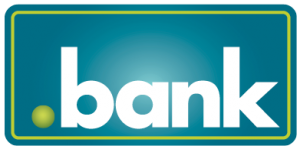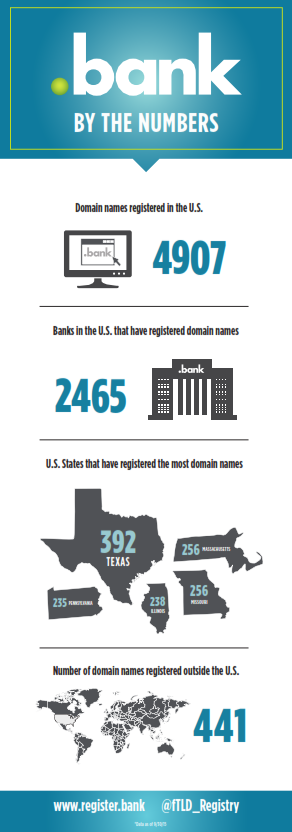 fTLD Registry made an announcement today that 36% of U.S. banks have purchased a .BANK domains name.
fTLD Registry made an announcement today that 36% of U.S. banks have purchased a .BANK domains name.
“In the United States there are approximately 6,800 banks. Right now, you’ll find most of them online at a .COM domain name—but all of that is starting to change.”
“Since May 2015, 2,465 banks have purchased one or more .BANK domain names— signaling their commitment to providing a trusted, verified and more secure location online for their banking services.”
Purchasing a .BANK domain name is available only to verified members of the global banking community, and fTLD Registry Services, alongside trusted partners, ensures it stays that way.
“For the financial services industry, the need to provide higher levels of security and verification in the face of mounting cybersecurity breaches and growing fraud is strong.”
BITS President Chris Feeney cited the whirlwind of .BANK activity earlier this summer: “In less than a week, the new .BANK web extension surpassed more than 5,000 applications from more than 2,100 institutions in the banking community.”
Doug Johnson, senior vice president of payments and cybersecurity policy for the American Bankers Association recently called the banks’ actions to further curb cyber fraud “a proactive step to address an issue we know exists.”
Now, fTLD Registry’s recently released infographic (see below) paints a picture of what has been happening behind the scenes during the past six months to provide a trusted and more secure location on the Internet for banks and consumers.
Of the 4,907 domain names registered by banks in the U.S. (banks can register more than one domain name), five states lead the pack: Texas, Massachusetts, Missouri, Illinois and Pennsylvania.
Globally, .BANK is taking hold too. Outside of the U.S., 441 .BANK domain names have been registered.
“Migrating an online banking platform will understandably take a considerable amount of time, which is why we’re just now seeing banks starting to use their .BANK domain names. But, as a recent Cleveland Plain Dealer article stated, “it will help customers know they are going to the real site and getting emails from a real employee at the actual bank.””
 OnlineDomain.com Domain Name News & Opinions
OnlineDomain.com Domain Name News & Opinions



 OnlineDomain.com - © Copyright 2012-2025 - All Rights Reserved
OnlineDomain.com - © Copyright 2012-2025 - All Rights Reserved